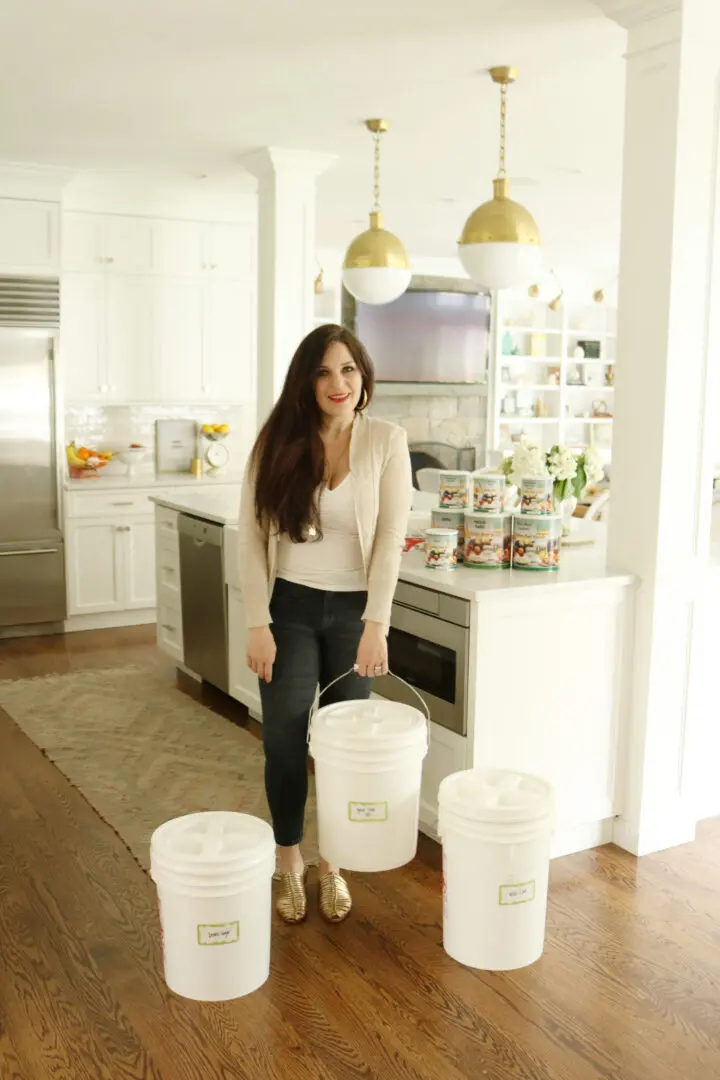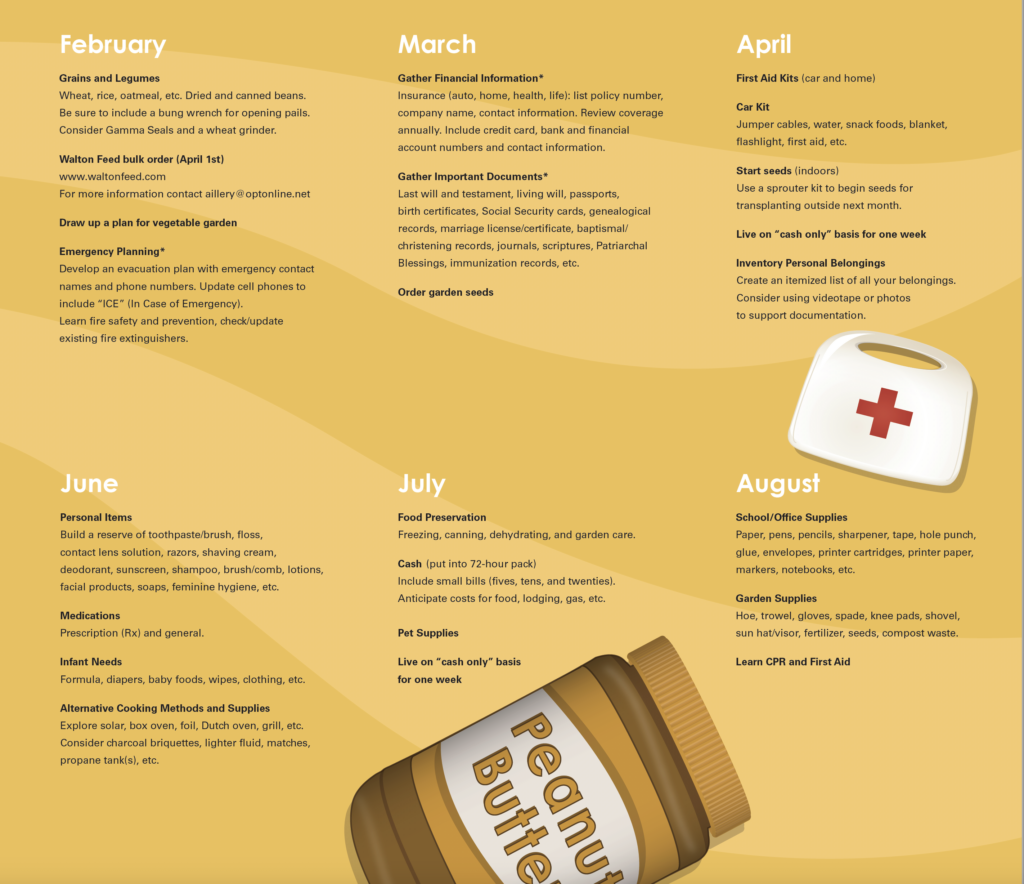This Easy Guide to Building Your Food Storage + Free Food Storage Guide
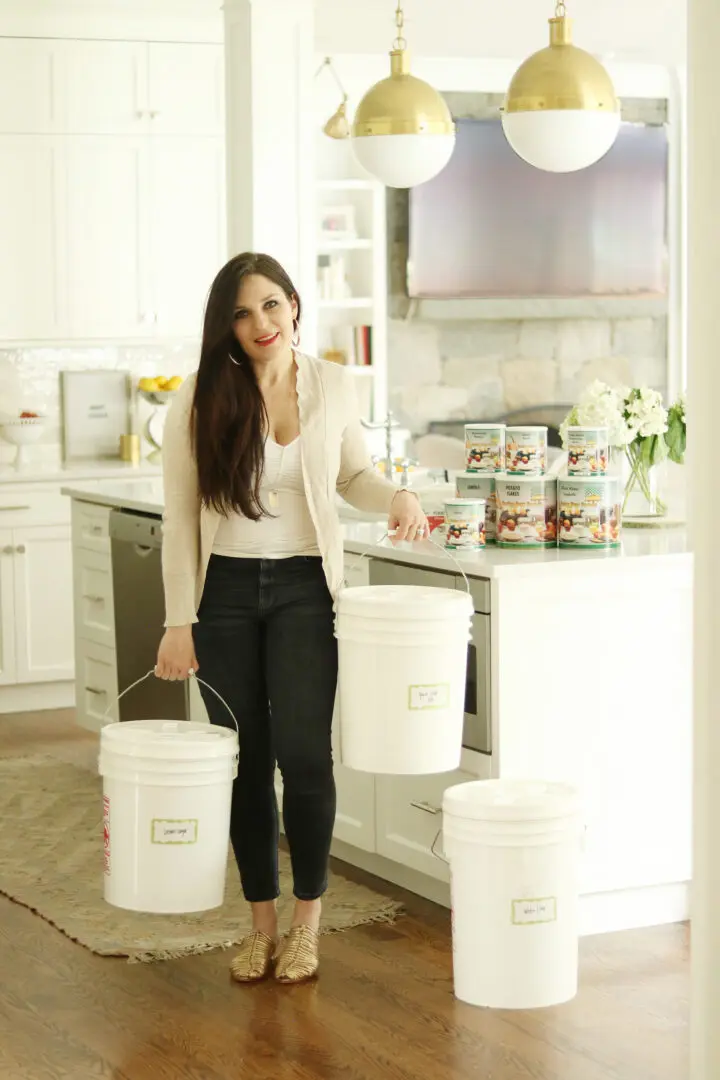
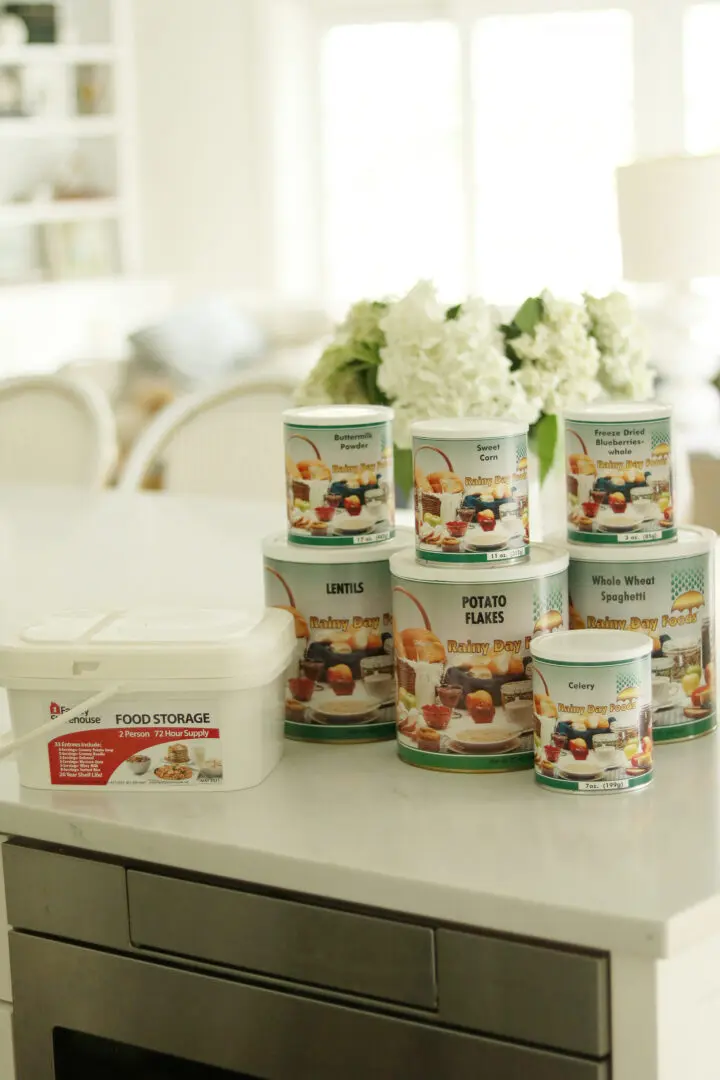
I’ve grown up around the word “food storage” my whole life. I remember going to my grandparent’s house as a child and helping my grandma pick peaches from her peach tree and then jarring them for her food storage. Their food storage was stored in their basement with cans and mason jars filled with food. My grandpa said he learned quite a bit while living through the Great Depression. He said “always be prepared and make sure you are self-reliant”. So that concept has been instilled in me and my life as I watched my mother using and replenishing our food storage growing up, and as I am started my own food storage as a young mother. I thought everyone needs an easy guide to food storage!
With food storage, I am not talking about stocking up your pantry. Although, I love how I organized and shared the best food containers that I use in our pantry. I am talking about having about a 3-month stockpile of food and water that your family can live off of if grocery stores are closed and if there is a nationwide food shortage. I think we can all agree that we have seen this with the coronavirus pandemic as supplies have been limited in our grocery stores. Also, I will be forever grateful to having a stocked food storage when my husband lost his job during the 2008 recession. We lived off our food storage and it helped us when money was low. Since many of us don’t have a farm, it is best, and wise, to store your own. I wanted to give you an easy guide to food storage so you can start your own. I am also share wonderful resources below like the “How to Eat Like an Elephant” Food Storage Guide that my food storage guru friend Mary Aillery compiled. It’s been a great resource for me when I’ve put my food storage together.
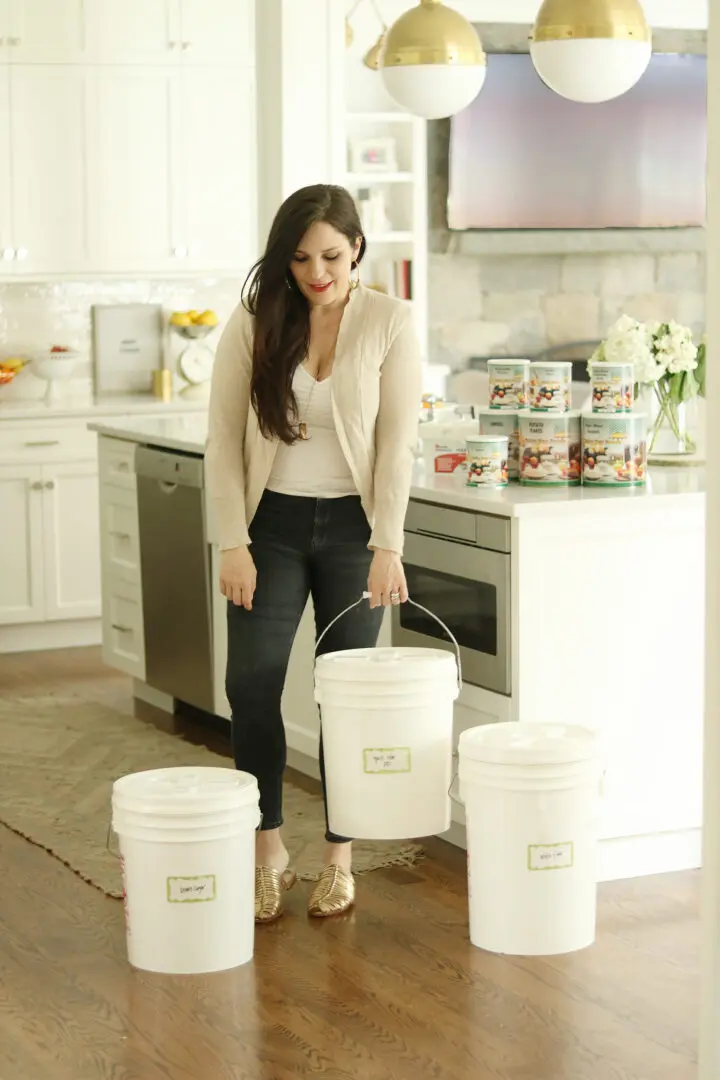
What is Food Storage and Why?
I mentioned many reasons above, but having a food storage is a supply of food for your family to live off of for about three months. Why should you store food? So you can be prepared with food during natural diasters, job loss, loss of spouse, major financial crisis, unexpected adventures, unexpected medial expenses, divorce, and of course global pandemics!
What Food Should I Store?
Store what you eat! Start tracking items you buy the most. If your family eats only gluten-free products then store gluten-free flour. Prep-package meals work great, but there is a shelf life, usually only one year! So I prefer bulk dry food. Bulk dry food is a great place to start–flour, rice, beans, oats, potatoes, pasta, powdered milk. Then store canned vegetables, fruits, meats, chili, tomato sauce. Think about snack foods like granola bars, popcorn, chip. Always look at shelf-life because many foods are only good for about a year like vegetable oil, salad dressings, mayonnaise, dried fruit, etc. I included an awesome monthly storage list that I use and it breaks down the foods you should store. This “How to Eat Like an Elephant” list (end of post) is complied by an awesome lady name Mary Aillery, who is a food storage guru at my church. Add or omit foods that work best for you family.

How Do I start a Food Storage?
Start small, then gradually work your way up to a three-month supply. Build a one-week supply of food until you are sufficient for three months. So, one way to do it is look at what is on sale at your grocery store. If something is on sale, take advantage of it and buy more than you need. If the sale sign says $10 for 10 cans, then buy 20 cans. Double it. I also love following the “How to Eat Like an Elephant” guide (end of post) that breaks down food storage by month. Of course you can adjust each month to sales or what is in season, but this is very helpful.
Where do I store Food Storage?
A good food storage space should have good ventilation and no direct sunlight. Dry and cool areas are the best like a basement. But if you don’t have a basement, a closet, under a bed or spare bedroom works great too. Make sure the area is pest-free. Do not store your food in a garage, outside shed, attics, laundry rooms or bathrooms. These areas have extreme temperatures and humidity levels can’t be controlled.

What to Use to Store Food?
This question can be a whole post in itself! But this can cover a huge range of how freeze foods to canning foods to using mylar bags and oxygen packages and large food grade buckets. I’d love to cover this topic in the future but mostly what I do is freeze my foods, can my foods and use the large grade buckets. I also like to buy #2.5 cans and #10 cans (pictured above) from bulk suppliers like Rainy Day Foods (best to make a large order with other people), Wise Food Storage. I also buy a lot from just Costco! For instance, when I buy a large bag of sugar, I pour it in one of my 25 lbs white food grade buckets. The top screws on and it’s great for storage!
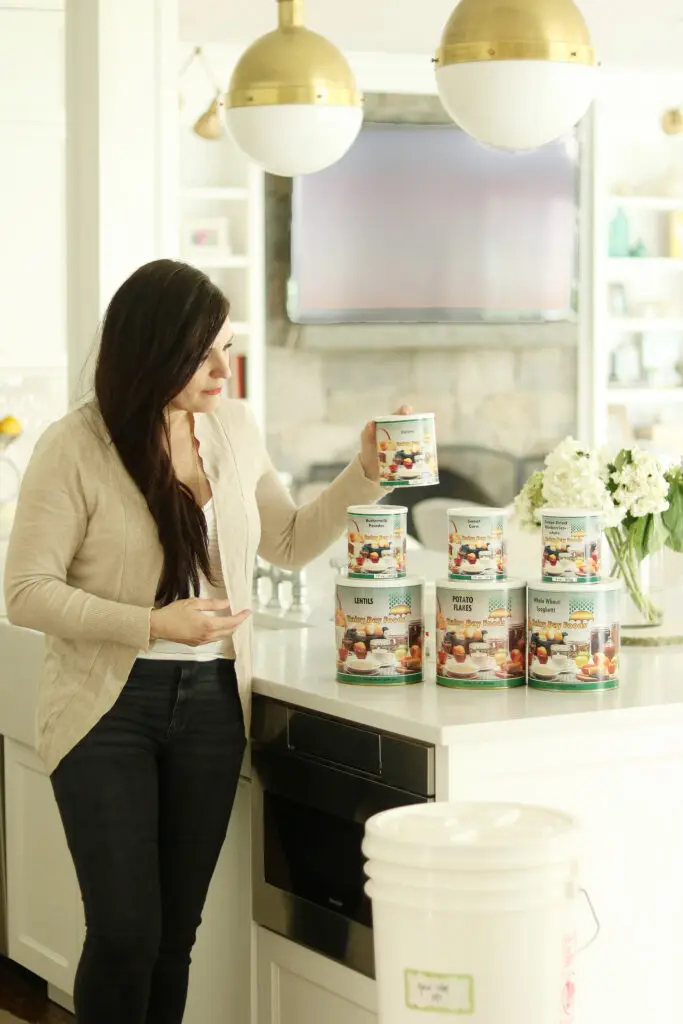
Tips
- Don’t spend money you don’t have and don’t go over budget on food storage! I always try and to contribute to my food storage every month so I’m not overwhelming my monthly budget. Check the “How to Eat Like an Elephant” Food Storage Guide below on how it breaks it down.
- Label with a black sharpie the dates of when you buy something so you know the shelf life.
- Save money on items with couponing, shopping at the dollar store, bulk-item shopping, starting an at-home garden, buying chickens.
- Do store a 72-hour kit/per family member that you can quickly grab in an event of an evacuation. I linked some of my favorites. Camping food also works great for this! Valley Food Storage has great freeze-dried foods.
- Consider purchasing a deep freezer or an extra refrigerator/freezer to store frozen meat, frozen vegetables and frozen meals. If I am out of powdered eggs, I like to freeze my eggs! Check out my IGTV video on how to freeze eggs.
- Store water! There are so many great articles on how to store water.
- Do store other supplies like light bulbs, paper towels, toilet paper, batteries, flashlights. Refer to the “How to Eat like an Elephant” list
- Last but not least–Don’t be that person that waited too long!
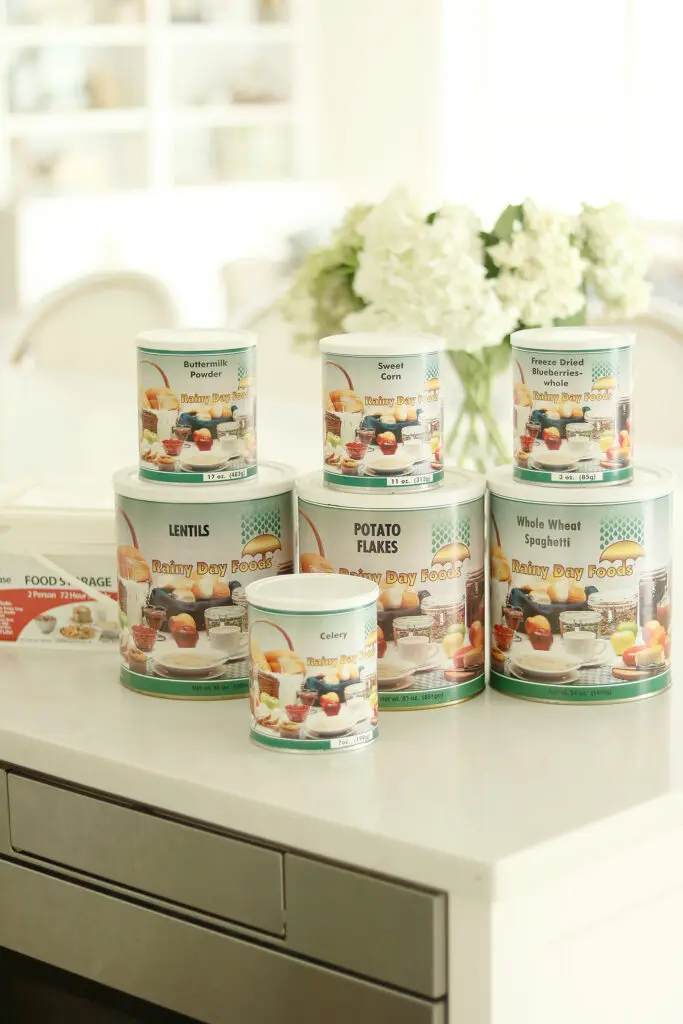
Download “How to Eat like An Elephant” Food Storage Guide
